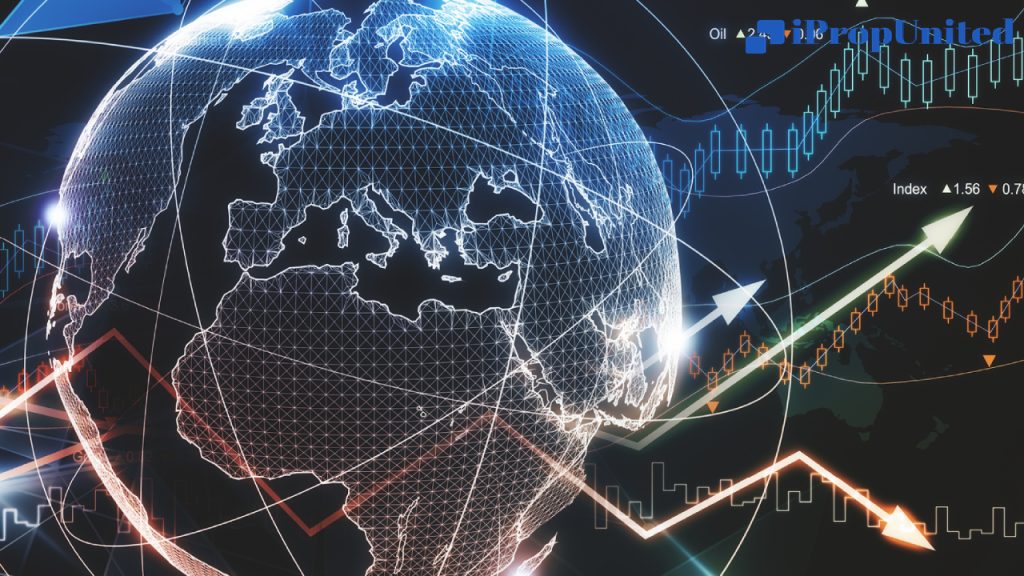The term “global economy” describes the related worldwide economic transactions between multiple nations. The countries involved may experience positive or negative effects from these economic activities.
It is similar to the national economy, which is the sum of economic activities carried out by economic players within the nation’s borders.
In the national economy, goods, services, labor, and economic actors are free to move within regions of a nation, but that is not applicable to the global economy. Various factors restrict such movements, for example, trade and capital flow protections.
Now that you understand the global economy, let’s discuss its characteristics and challenges.
The term “global economy” describes the related worldwide economic transactions between multiple nations. The countries involved may experience positive or negative effects from these economic activities.
It is similar to the national economy, which is the sum of economic activities carried out by economic players within the nation’s borders.
In the national economy, goods, services, labor, and economic actors are free to move within regions of a nation, but that is not applicable to the global economy. Various factors restrict such movements, for example, trade and capital flow protections.
Now that you understand the global economy, let’s discuss its characteristics and challenges.

Implications of the global economy and its characteristics
As globalization has accelerated, the world economy has integrated. In recent years, there has been an increase in the mobility of capital, information, technology, and services. Moreover, globalization is a key factor in a nation’s economic growth. Some nations benefit from more mobile production inputs and products.
Information Technology
Increased trade and production are made easier by the internet and information technology. We have the ability to sell goods both locally and globally. It is not just big companies, small businesses can also do it . The market is bigger as a result of globalization, but the level of competition is also rising.
Also, traditional business patterns are disrupted by technological advancements. The existence of new business models started to have a negative impact on some industries, including newspapers and retail. When technology develops, barriers to access are reduced. Digital channels can be used by individuals, small businesses, and even big businesses.
Emerging new economies
China, Indonesia, India, and several other developing nations became new global forces due to the creation of new economies. They started to match the current worldwide output of western nations. Their participation is growing as they experience faster growth than developed nations. Their role in global trade is also occasionally becoming more substantial.
Role of the government in global commerce
Some governments are willing to aid homegrown businesses both directly and indirectly. Numerous state-owned businesses started to grow internationally. Success on the domestic market provides the company with the resources necessary to succeed abroad. That is a single example of how the government engages in global commerce.
The advent of sovereign wealth funds is another instance (SWFs). It also symbolizes the part that governments play in world commerce. To help the economy and people, several SWFs make investments in numerous enterprises abroad. It receives funds from central bank reserves, privatization, and money made from the export of natural resources.
Expanding global value chain
International businesses aim to benefit specifically from each nation. Examples include the plentiful supply of raw materials and the lower cost of labor. In order to take advantage, they break down the production process in various nations.
For instance, the business has four subsidiaries spread throughout various nations. Its subsidiary manufactures inexpensive raw materials in the first nation. After that, the corporation exports the raw materials to the second country’s subsidiary.
In the second nation, businesses use the advantages of low wages to make semi-finished goods. The third subsidiary receives it once the corporation exports it.
To make the final product, a third subsidiary assembles semi-finished items. Although the subsidiary has a more skilled workforce than the parent business, its wages are still very modest.
The finished product is then imported by the parent firm and sold domestically. Because it can reduce costs along the industrial value chain, it may sell goods at prices that are competitive.
Homogenizing culture
Through globalization, concepts, meanings, and values are spread from one nation to another. Individuals are beginning to change their lifestyles to reflect trends from other nations. K-Pop is one example of how culture is becoming more universal. English is being used as a conversational language by more and more people. Everything points to the globalization of culture.
Challenges in the global economy
In addition to having benefits, a connected global economy may also have drawbacks. These negative repercussions could be a regional issue or a problem that affects the entire global community. Issues with negative impacts include:
- Uneven economic development and global economic inequality
- Worldwide poverty
- Endless non-renewable resources
- Environmental degradation and climate change
- More susceptible to the economic and financial crisis’s ripple effects
- Increasing geopolitical tension
Follow and Connect with us: Twitter, Facebook, Linkedin, Instagram







